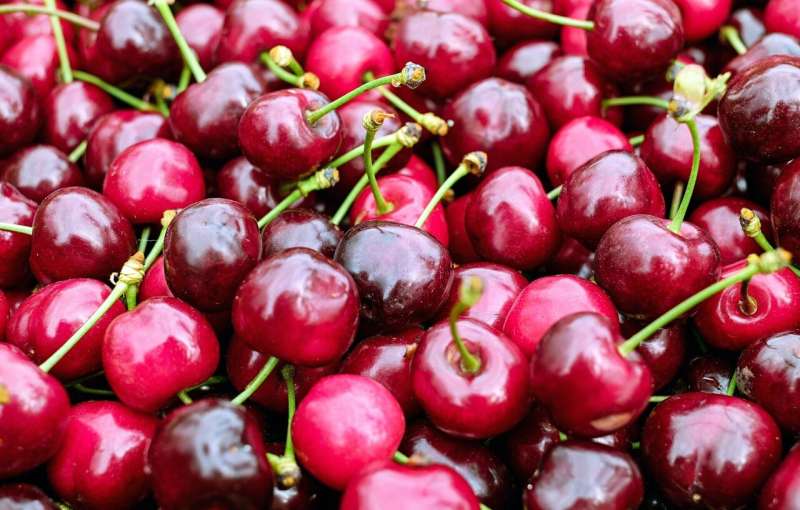This article has been reviewed according to Science X's editorial process and policies. Editors have highlighted the following attributes while ensuring the content's credibility:
fact-checked
trusted source
proofread
How calcium reduces macrocracking in sweet cherries

Researchers at the University of Hannover have uncovered new insights into the mode of action of calcium in the reduction of macrocracking in sweet cherry fruit. The findings shed light on the mechanisms underlying this phenomenon, offering significant implications for cherry growers and the fruit industry at large.
The work is published in the journal J. Amer. Soc. Hort. Sci..
Macrocracking, a prevalent issue in sweet cherry production, has long plagued growers worldwide, leading to substantial economic losses. Despite numerous studies highlighting the benefits of calcium (CA) application in mitigating this problem, the exact mechanisms by which calcium exerts its protective effects have remained elusive until now.
This new study utilized advanced imaging techniques and biochemical analyses to delve deep into the cellular processes at play during cherry fruit development. Through a series of experiments, the team elucidated the crucial role of calcium in strengthening cell walls and enhancing structural integrity, thus reducing susceptibility to macrocracking. It appears that calcium acts as a key regulator of cell wall metabolism in sweet cherry fruit.
By promoting cross-linking of cell wall components and modulating enzyme activity, calcium confers greater resistance to mechanical stress, thereby minimizing the incidence of macrocracks. When CA comes into contact with the cell wall through a microscopic crack in the cuticle, the extension of this microscopic crack into a macrocrack is inhibited even at low CA concentrations. At the CA concentrations typically used, there is no effect of CA on water uptake or on cuticle deposition.
By understanding the intricacies of calcium's mode of action, growers can tailor their cultivation practices to enhance fruit quality and reduce post-harvest losses effectively.
Moritz Knoche is a Professor for fruit science at the Institute for Horticultural Production Systems at Leibniz University Hanover, Germany. The research of his team focuses on fruit surface disorders such as cracking, russeting, water soaking and skin spots in temperate and tropical fruit crops.
He and his team recently identified the mechanism of sweet cherry fruit cracking. The so-called "Zipper model" provides a coherent explanation for cracking of sweet cherry fruit that is consistent with all experimental findings to date. The research on the mode of action of CA in modifying cracking investigates the effect of CA on the individual steps involved in the Zipper.
More information: Andreas Winkler et al, Mode of Action of Calcium in Reducing Macrocracking of Sweet Cherry Fruit, J. Amer. Soc. Hort. Sci. (2024). DOI: 10.21273/JASHS05354-23
Provided by American Society for Horticultural Science





















